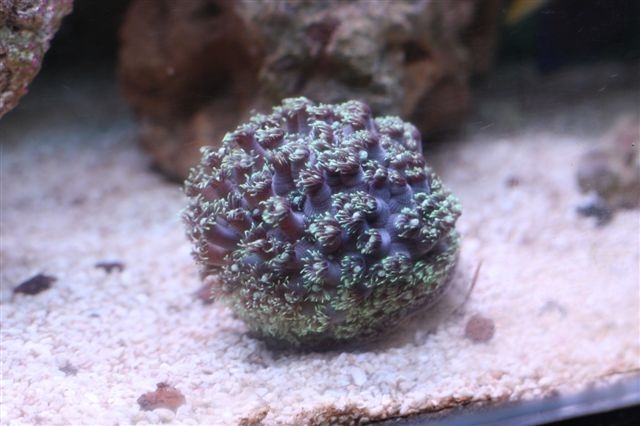-
Posts
1,167 -
Joined
-
Last visited
-
Days Won
4
Content Type
Profiles
Forums
Gallery
Posts posted by tench1
-
-
this coral up to only recently was believed to be impossible to sustain for a long period of time. but there are reefers who have kept them for many many years. how?
goniopora require less than average reef quality systems. as bro amby said, they like "dirty" water. gonios are found in turbid nutrient rich water in the wild. where minuet food particles are abundant. this coral is very hard to keep. "growth" is only considered when u see new calcerous skeleton growing and new polyps emerging. the polyps can greatly expand/contract which lets most ppl believe that it is "growing"
How about a tank that is fish based set up? Dirty enough? haha

Any advice?

Is it appropriate to place it on the sand bed? or mid range depth? Which will have lotsa wave...

-
name : goniopora
do a search online for more generic info...
mine did not last more than 3 mths even with feeding ...guess my 2x 24watt t5 not bright enough.... any one else care to share??
 Thanks Demon bro, i managed to find some info on regards to this new baby.
Thanks Demon bro, i managed to find some info on regards to this new baby.Below are the write up for it.
For those whom had theirs survived for > 1 year, congrats! Please share your parameters!


Scientific Name: Goniopora sp.
Classification: LPS
Common Names: Flower Pot Coral, Goniopora Coral
Description:
Typically rounded or oblong colonies with polyps that have 24 tentacles. Similar species Alveopora, always has 12 tentacles. Color most often seen is green as seen in the baby above. Other more colorful variations exist including pink and purple as shown above.
Veron: Colonies are usually branching, columnar or massive but may be encrusting. Corallites have thick but porous walls and calices are filled with compacted septa and columellae. Polyps are long and fleshy and tentacles are normally extended day and night. Polyps have 24 tentacles. Different species have polyps of different shapes and colors.
Natural Environment:
Veron: Low to moderate current areas such as lagoons and often associated with turbid water conditions.
Care:
Hardiness: Goniopora is delicate and long term survival (>12 months) is probably less than 10%. Not recommended for the beginning hobbyist, although success is as much luck as skill at this point in our understanding of this coral. It does appear that the more colorful short tentacled specimens, like the pink and purple shown above are more hardy than the more common greenish brown versions with long tentacles.
Lighting: Seems to like moderate lighting in general. Brightly colored specimens seem to like the highest intensity lighting. The specimens above are all kept 24" under 400W 10K MH lamps.
Water Current: Seem to prefer moderate water motion which keeps their polyps gently waving in the water current.
Temperature: Does well within a range of at least 77º to 84º F
Aggressiveness: Appears to be low.
Feeding: Goniopora is photosynthetic and does not take any known foods. The method of death when a specimen dies is usually a long period of decline that may be caused by nutritional deficiency. What is lacking is unfortunately so far unknown. Its natural habitat of turbid lagoons indicates that it may benefit from less than pristine water.
Supplements: Maintaining correct calcium and alkalinity levels is undoubtedly important for skeletal development
Tank Positioning: Best positioning is in moderate water flow, in a moderate to high light area of the tank.
-
-
Nice Fishes! Upz!




ID this Coral Please
in Soft Coral Forum
Posted
Thanks Lemon, Let me try and feedback again